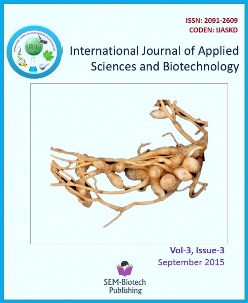Extended Spectrum Beta Lactamases Detection and Multiple Antibiotic Resistance Indexing of Escherichia Coli from Urine Samples of Patients from a Referral Hospital of Eastern Nepal
DOI:
https://doi.org/10.3126/ijasbt.v3i3.12924Keywords:
Urine, Escherichia coli, ESBL, Multiple Antibiotic Resistance (MAR) index, MDRAbstract
Background: Escherichia coli is the most common causative agent of urinary tract infection. Antibiotic resistance among uropathogens has become a prominent public health problem. Multidrug resistance bacteria have limited the therapeutic possibilities by producing Extended Spectrum Beta Lactamases (ESBL).
Objective: Since routine monitoring of ESBL producers are not conducted in clinical laboratories their true prevalence is still unknown. So the objective of this research was to assess multiple antibiotic resistance (MAR) indices and determine ESBL production among Escherichia coli isolated from urine samples.
Methods: Standard microbiological techniques and antibiotic sensitivity test were performed by Kirby Bauer disc diffusion method to identify E. coli. ESBL screening was done by using Ceftriaxone, Aztreonam, Cefotaxime, Ceftazidime and Cefpodoxime whereas confirmation by combined disc assay. SPSS 16 software was used to analyze data.
Results: 86.95% E. coli isolates were MDR strains. 27 isolates had multiple antibiotic resistance (MAR) index of 0.2 and 5 isolates had MAR index of 0.7. E. coli isolates showed higher degree of resistance towards Amoxicillin (100%) while 100% were sensitive towards Gentamicin followed by Nitrofurantoin (62.31%). The reliable screening agent for ESBL detection with sensitivity 100% and positive predictive value of 80% was Cefotaxime. Combined disc assay detected 12/69 (17.31%) of E. coli isolates as confirmed ESBL producers.
Conclusion: The ubiquity of ESBL-producing E. coli was observed emphasizing the necessity of regular surveillance of ESBL producing clinical isolates in clinical samples to minimize multi-drug resistance strains and avert the ineffectiveness of antimicrobial agent for good health practices.\
Int J Appl Sci Biotechnol, Vol 3(3): 423-426




